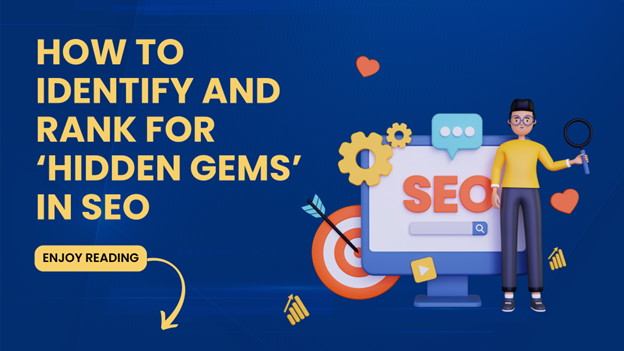Gated content refers to content that is only accessible to website visitors who provide their contact information through a lead capture form. This type of content is a popular marketing tool for lead generation, especially in the B2B sector. The purpose of gated content is to generate leads for the sales team by gathering information on promising leads to nurture them into customers.
What is gated Content?
Gated content is any form of content that requires users to exchange personal data. The content is essentially concealed beneath a form. Businesses employ gated information to produce leads and, eventually, purchases.
According to one study, up to 80% of B2B content marketing assets are gated. This is because gated content can help B2B marketers to:
- Generate leads: Gated content is an effective way to generate leads because it allows marketers to capture contact information from potential customers.
- Qualify leads: By requiring website visitors to provide their contact information, marketers can gather valuable data about their target audience, such as their job title, company size, and pain points.
- Build relationships: Gated content can be used to build relationships with potential customers by providing them with valuable information that addresses their pain points.
- Measure engagement: Gated content allows marketers to track how many people are interested in their content by measuring the number of downloads or form submissions.
However, it is important to note that gated content can also have some drawbacks. For example, it can be seen as a barrier to accessing information, which can be frustrating for website visitors.
What are some examples of effective gated content in B2B marketing?
Gated content is a popular marketing tool for lead generation in the B2B sector. Here are some examples of effective gated content in B2B marketing:
- Whitepapers: A whitepaper is a long-form piece of content that provides in-depth information about a specific topic. Whitepapers are often used to establish thought leadership and generate leads.

- E-Books: An E-Book is a shorter piece of content that provides information about a specific topic. E-Books are often used to educate potential customers about a product or service.

- Webinars: A webinar is a live or recorded presentation that provides information about a specific topic. Webinars are often used to educate potential customers and generate leads.

- Case studies: A case study is a detailed analysis of how a product or service helped a specific customer. Case studies are often used to demonstrate the value of a product or service and generate leads.

- Industry reports: Industry reports provide insights into a specific industry or market. They are often used to establish thought leadership and generate leads.

- Assessments: Assessments are interactive tools that allow website visitors to evaluate their knowledge or skills related to a specific topic. They are often used to engage potential customers and generate leads.
- Calculators: Calculators are interactive tools allowing website visitors to calculate a product or service’s potential savings or ROI. They are often used to demonstrate the value of a product or service and generate leads.
By using gated content effectively, B2B marketers can generate leads, qualify leads, build relationships, and measure engagement. However, it is important to balance the benefits of gated content with the potential drawbacks, such as frustrating website visitors and limiting SEO.
How can gated content be promoted to increase lead generation in B2B marketing?
Promoting gated content is crucial to increase lead generation in B2B marketing. Here are some ways to promote gated content effectively:
- Use social media: Promote gated content on social media platforms such as LinkedIn, Twitter, and Facebook. Share teasers or snippets of the content to generate interest and drive traffic to your website.
- Email marketing: Use email marketing to promote gated content to your existing subscribers. Send a dedicated email or include a call to action in your regular newsletters.
- Paid advertising: Use paid advertising such as Google Ads or social media ads to promote gated content to a wider audience. Target your ads to your ideal customer profile to maximize the effectiveness of your advertising.

- Influencer marketing: Partner with influencers in your industry to promote your gated content to their followers. This can help you reach a wider audience and generate more leads.
- Website optimization: Optimize your website to promote gated content effectively. Use pop-ups, banners, or calls to action to encourage visitors to download your gated content.
- Landing pages: Create dedicated landing pages for your gated content to increase conversions. Make sure your landing pages are optimized for lead generation and include a clear call-to-action.

By promoting gated content effectively, B2B marketers can increase lead generation and generate more qualified leads through their b2b social media. It is important to use a combination of these strategies to maximize the effectiveness of your gated content promotion.
What are some effective ways to promote gated content through blog posts in B2B marketing?
Here are some effective ways to promote gated content through blog posts in B2B marketing:
- Tease the gated content in blog posts: Mention the gated content in your blog posts and provide a brief overview of what readers can expect to learn from it. This can pique their interest and encourage them to download the gated content.
- Include calls-to-action in blog posts: Include calls-to-action (CTAs) in your blog posts that encourage readers to download the gated content. Make sure the CTAs are clear and prominent.
- Use related blog posts to promote gated content: If you have a blog post that covers a topic related to your gated content, use it to promote the gated content. Include a CTA in the blog post that encourages readers to download the gated content for more information.
- Offer gated content as a bonus for subscribing to your blog: Encourage readers to subscribe to your blog by offering gated content as a bonus. This can help you build your email list and generate more leads.
- Use guest blogging to promote gated content: Write guest blog posts for other websites and include a CTA that encourages readers to download your gated content. This can help you reach a wider audience and generate more leads.
In conclusion, gated content plays a crucial role in B2B marketing. It allows marketers to capture lead information, establish trust and credibility, and target specific audience segments. However, it should be used strategically and in moderation to ensure a positive user experience.
Don’t forget to follow our company salesera social media pages for high-quality business growth content and watch educational and informative content on our YouTube page.











